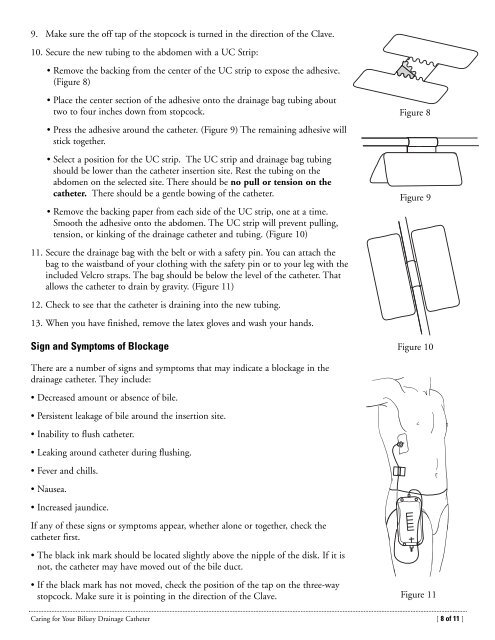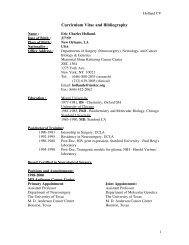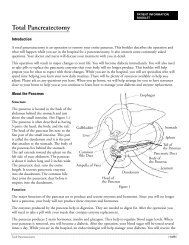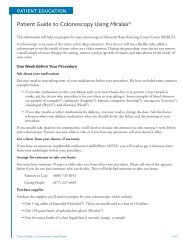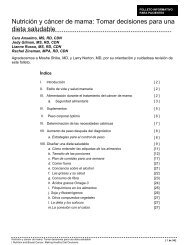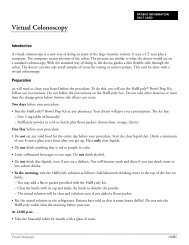Caring for Your Biliary Drainage Catheter - Memorial Sloan ...
Caring for Your Biliary Drainage Catheter - Memorial Sloan ...
Caring for Your Biliary Drainage Catheter - Memorial Sloan ...
Create successful ePaper yourself
Turn your PDF publications into a flip-book with our unique Google optimized e-Paper software.
9. Make sure the off tap of the stopcock is turned in the direction of the Clave.<br />
10. Secure the new tubing to the abdomen with a UC Strip:<br />
• Remove the backing from the center of the UC strip to expose the adhesive.<br />
(Figure 8)<br />
• Place the center section of the adhesive onto the drainage bag tubing about<br />
two to four inches down from stopcock.<br />
• Press the adhesive around the catheter. (Figure 9) The remaining adhesive will<br />
stick together.<br />
• Select a position <strong>for</strong> the UC strip. The UC strip and drainage bag tubing<br />
should be lower than the catheter insertion site. Rest the tubing on the<br />
abdomen on the selected site. There should be no pull or tension on the<br />
catheter. There should be a gentle bowing of the catheter.<br />
• Remove the backing paper from each side of the UC strip, one at a time.<br />
Smooth the adhesive onto the abdomen. The UC strip will prevent pulling,<br />
tension, or kinking of the drainage catheter and tubing. (Figure 10)<br />
11. Secure the drainage bag with the belt or with a safety pin. You can attach the<br />
bag to the waistband of your clothing with the safety pin or to your leg with the<br />
included Velcro straps. The bag should be below the level of the catheter. That<br />
allows the catheter to drain by gravity. (Figure 11)<br />
12. Check to see that the catheter is draining into the new tubing.<br />
13. When you have finished, remove the latex gloves and wash your hands.<br />
Sign and Symptoms of Blockage<br />
There are a number of signs and symptoms that may indicate a blockage in the<br />
drainage catheter. They include:<br />
• Decreased amount or absence of bile.<br />
• Persistent leakage of bile around the insertion site.<br />
• Inability to flush catheter.<br />
• Leaking around catheter during flushing.<br />
• Fever and chills.<br />
• Nausea.<br />
• Increased jaundice.<br />
If any of these signs or symptoms appear, whether alone or together, check the<br />
catheter first.<br />
• The black ink mark should be located slightly above the nipple of the disk. If it is<br />
not, the catheter may have moved out of the bile duct.<br />
• If the black mark has not moved, check the position of the tap on the three-way<br />
stopcock. Make sure it is pointing in the direction of the Clave.<br />
Figure 8<br />
Figure 9<br />
Figure 10<br />
Figure 11<br />
<strong>Caring</strong> <strong>for</strong> <strong>Your</strong> <strong>Biliary</strong> <strong>Drainage</strong> <strong>Catheter</strong> [ 8 of 11 ]


